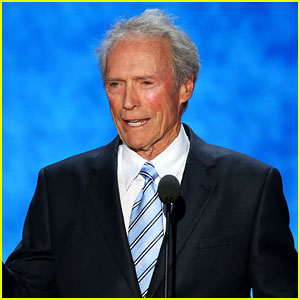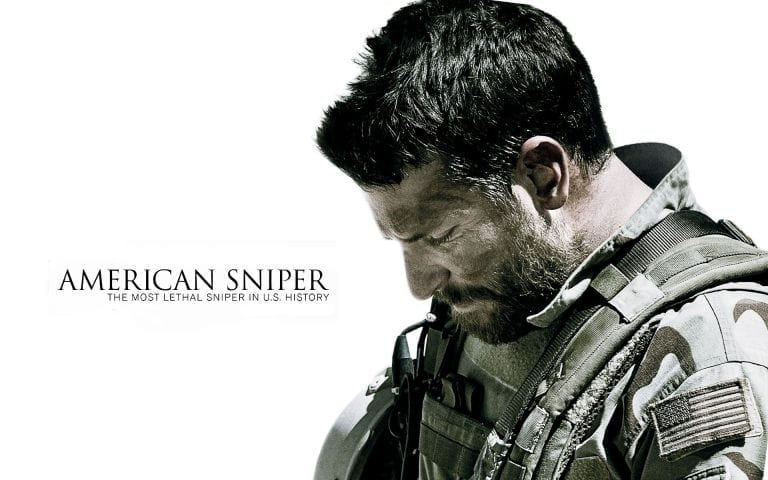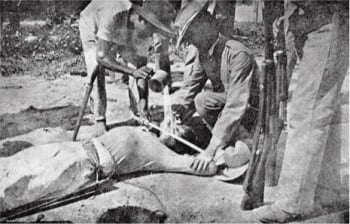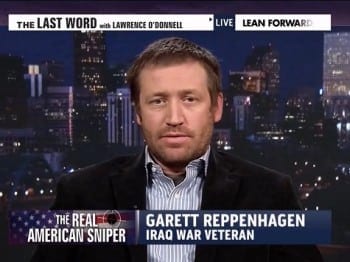
Self-Destruct Culture
=By= Henry A. Giroux

Gun violence in the United States has produced a culture soaked in blood – a culture that threatens everyone and extends from accidental deaths, suicides and domestic violence to mass shootings. In late December, a woman in St. Cloud, Florida, fatally shot her own daughter after mistaking her for an intruder. Less than a month earlier, on December 2, in San Bernardino, California, was the mass shooting that left 14 people dead and more than 20 wounded. And just two months before that, on October 1, nine people were killed and seven wounded in a mass shooting at a community college in Roseburg, Oregon.
Mass shootings have become routine in the United States and speak to a society that relies on violence to feed the coffers of the merchants of death. Given the profits made by arms manufacturers, the defense industry, gun dealers and the lobbyists who represent them in Congress, it comes as no surprise that the culture of violence cannot be abstracted from either the culture of business or the corruption of politics. Violence runs through US society like an electric current offering instant pleasure from all cultural sources, whether it be the nightly news or a television series that glorifies serial killers.
At a policy level, violence drives the arms industry and a militaristic foreign policy, and is increasingly the punishing state’s major tool to enforce its hyped-up brand of domestic terrorism, especially against Black youth. The United States is utterly wedded to a neoliberal culture in which cruelty is viewed as virtue, while mass incarceration is treated as the chief mechanism to “institutionalize obedience.” At the same time, a shark-like mode of competition replaces any viable notion of solidarity, and a sabotaging notion of self-interest pushes society into the false lure of mass consumerism. The increasing number of mass shootings is symptomatic of a society engulfed in racism, fear, militarism, bigotry and massive inequities in wealth and power.
Over 270 mass shootings have taken place in the United States in 2015 alone, proving once again that the economic, political and social conditions that underlie such violence are not being addressed. Sadly, these shootings are not isolated incidents. For example, one child under 12 years old has been killed every other day by a firearm, which amounts to 555 children killed by guns in three years. An even more frightening statistic and example of a shocking moral and political perversity was noted in data provided by the Centers for Disease Control and Prevention (CDC), which states that “2,525 children and teens died by gunfire in [the United States] in 2014; one child or teen death every 3 hours and 28 minutes, nearly 7 a day, 48 a week.” Such figures indicate that too many youth in the United States occupy what might be called war zones in which guns and violence proliferate. In this scenario, guns and the hypermasculine culture of violence are given more support than young people and life itself.
The predominance of a relatively unchecked gun culture and a morally perverse and politically obscene culture of violence is particularly evident in the power of the gun lobby and its political advocates to pass laws in eight states to allow students and faculty to carry concealed weapons “into classrooms, dormitories and other buildings” on campuses. In spite of the rash of recent shootings on college campuses, Texas lawmakers, for instance, passed one such “campus carry bill,” which will take effect in August 2016. To add insult to injury, they also passed an “open carry bill” that allows registered gun owners to carry their guns openly in public. Such laws not only reflect “the seemingly limitless legislative clout of gun interests,” but also a rather irrational return to the violence-laden culture of the “Wild West.”
To read more articles by Henry A. Giroux and other authors in the Public Intellectual Project, click here.
As in the past, individuals will be allowed to walk the streets, while openly carrying guns and packing heat as a measure of their love of guns and their reliance upon violence as the best way to address any perceived threat to their security. This return to the deadly practices of the ” Wild West” is neither a matter of individual choice nor some far-fetched yet allegedly legitimate appeal to the Second Amendment. On the contrary, mass violence in the United States has to be placed within a broader historical, economic and political context in order to address the totality of the forces that produce it. Focusing merely on mass shootings or the passing of potentially dangerous gun legislation does not get to the root of the systemic forces that produce the United States’ love affair with violence and the ideologies and criminogenic institutions that produce it.
Imperial policies that promote aggression all across the globe are now matched by increasing levels of lawlessness and state repression, which mutually feed each other. On the home front, civil society is degenerating into a military organization, a space of lawlessness and warlike practices, organized primarily for the production of violence. For instance, as Steve Martinot observes at CounterPunch, the police now use their discourse of command and power to criminalize behavior; in addition, they use military weapons and surveillance tools as if they are preparing for war, and create a culture of fear in which militaristic principles replace legal principles. He writes:
This suggests that there is an institutional insecurity that seeks to cover itself through social control … the cops act out this insecurity by criminalizing individuals in advance. No legal principle need be involved. There is only the militarist principle…. When police shoot a fleeing subject and claim they are acting in self-defense (i.e. threatened), it is not their person but the command and control principle that is threatened. To defend that control through assault or murderous action against a disobedient person implies that the cop’s own identity is wholly immersed in its paradigm. There is nothing psychological about this. Self-worth or insecurity is not the issue. There is only the military ethic of power, imposed on civil society through an assumption of impunity. It is the ethos of democracy, of human self-respect, that is the threat.
The rise of violence and the gun culture in the United States cannot be separated from a transformation in governance in the United States. Political sovereignty has been replaced by economic sovereignty as corporate power takes over the reins of governance. The more money influences politics, the more corrupt the political culture becomes. Under such circumstances, holding office is largely dependent on having huge amounts of capital at one’s disposal, while laws and policies at all levels of government are mostly fashioned by lobbyists representing big business corporations and financial institutions. Moreover, such lobbying, as corrupt and unethical as it may be, is now carried out in the open by the National Rifle Association (NRA) and other individuals, groups and institutions invested in the militarization of US society. This lobbying is then displayed as a badge of honor – a kind of open testimonial to the lobbyists’ disrespect for democratic governance.
But money in politics is not the only major institutional factor in which everyday and state violence are nourished by a growing militarism. As David Theo Goldberg has argued in his essay “Mission Accomplished: Militarizing Social Logic,” the military has also assumed a central role in shaping all aspects of society. Militarization is about more than the use of repressive power; it also represents a powerful social logic that is constitutive of values, modes of rationality and ways of thinking. According to Goldberg,
The military is not just a fighting machine…. It serves and socializes. It hands down to the society, as big brother might, its more or less perfected goods, from gunpowder to guns, computing to information management … In short, while militarily produced instruments might be retooled to other, broader social purpose – the military shapes pretty much the entire range of social production from commodities to culture, social goods to social theory.
The militarization and corporatization of social logic permeates US society. The general public in the United States is largely depoliticized through the influence of corporations over schools, higher education and other cultural apparatuses. The deadening of public values, civic consciousness and critical citizenship are also the result of the work of anti-public intellectuals representing right-wing ideological and financial interests, a powerful set of corporate-controlled media agencies that are largely center-right and a market-driven public pedagogy that reduces the obligations of citizenship to the endless consumption and discarding of commodities. Military ideals permeate every aspect of popular culture, policy and social relations. In addition, a pedagogy of historical, social and racial amnesia is constructed and circulated through celebrity and consumer culture.
A war culture now shapes every aspect of society as warlike values, a hypermasculinity and an aggressive militarism seep into every major institution in the United States, including schools, the corporate media and local police forces. The criminal legal system has become the default structure for dealing with social problems. More and more people are considered disposable because they offend the sensibilities of the financial elite, who are rapidly consolidating class power. Under such circumstances, violence occupies an honored place.
It is impossible to understand the rise of gun culture and violence in the United States without thinking about the maturation of the military state. Since the end of the Cold War the United States has built “the most expensive and lethal military force in the world.” The defense budget for 2015 totaled $598.5 billion and accounted for 54 percent of all federal discretionary spending. The US defense budget is both larger than the combined G-20 and “more than the combined military spending of China, Russia, the United Kingdom, Japan, France, Saudi Arabia, India, Germany, Italy and Brazil,” according to an NBC report. Since 9/11, the United States has intensified both the range of its military power abroad while increasing the ongoing militarization of US society. The United States circles the globe with around 800 military bases, producing a massive worldwide landscape of military force, at an “annual cost of $156 billion,” according to a report by David Vine in The Nation.
Moreover, Vine adds, “there are US troops or other military personnel in about 160 foreign countries and territories, including small numbers of Marines guarding embassies and larger deployments of trainers and advisers like the roughly 3,500 now working with the Iraqi army.” Not only is the Pentagon in an unprecedented position of power, but also it thrives on a morally bankrupt vision of domestic and foreign policy dependent upon a world defined by terrorism, enemies and perpetual fear. Military arms are now transferred to local police departments, drone bases proliferate, and secret bases around the world support special operations, Navy SEALs, CIA personnel, Army Rangers and other clandestine groups, as Nick Turse has shown in Tomorrow’s Battlefield. Under such circumstances, it is not surprising, as Andrew Bacevich points out, that “war has become a normal condition [and the] use of violence has become the preferred “instrument of statecraft.”
Violence feeds on corporate-controlled disimagination machines that celebrate it as a sport while upping the pleasure quotient for the public. Americans do not merely engage in violence; they are also entertained by it. This kind of toxic irrationality and lure of violence is mimicked in the United States’ aggressive foreign policy, in the sanctioning of state torture and in the gruesome killings of civilians by drones. As my colleague David L. Clark pointed out to me in an email, voters’ support for ” bombing make-believe countries [with Arab-sounding names] is not a symptom of muddled confusion but, quite to the contrary, a sign of unerring precision. It describes the desire to militarize nothing less than the imagination and to target the minutiae of our dreams.” State repression, unbridled self-interest, an empty consumerist ethos and an expansive militarism have furthered the conditions for society to flirt with forms of irrationality that are at the heart of everyday aggression, violence and the withering of public life.
Pushback Against Gun Control Efforts
Warlike values no longer suggest a pathological entanglement with a kind of mad irrationality or danger. On the contrary, they have become a matter of common sense. For instance, the US government is willing to lock down a major city such as Boston in order to catch a terrorist or prevent a terrorist attack, but refuses to pass gun control bills that would significantly lower the number of Americans who die each year as a result of gun violence. As Michael Cohen observes, it is truly a symptom of irrationality when politicians can lose their heads over the threat of terrorism, even sacrificing civil liberties, but ignore the fact that “30,000 Americans die in gun violence every year (compared to the 17 who died [in 2012] in terrorist attacks).” It gets worse.
As the threat of terrorism is used by the US government to construct a surveillance state, suspend civil liberties and accelerate the forces of authoritarianism, the fear of personal and collective violence has no rational bearing on addressing the morbid acceleration of gun violence. In fact, the fear of terrorism appears to feed a toxic culture of violence produced, in part, by the wide and unchecked availability of guns. The United States’ fascination with guns and violence functions as a form of sport and entertainment, while gun culture offers a false promise of security. In this logic, one not only kills terrorists with drones, but also makes sure that patriotic Americans are individually armed so they can use force to protect themselves against the apparitions whipped up by right-wing politicians, pundits and the corporate-controlled media.
Rather than bring violence into a political debate that would limit its production, various states increase its possibilities by passing laws that allow guns at places from bars to houses of worship. Florida’s “stand your ground” law, based on the notion that one should shoot first and ask questions later, is a morbid reflection of the United States’ adulation of gun culture and the fears that fuel it. This fascination with guns and violence has infected the highest levels of government and serves to further anti-democratic and authoritarian forces. For example, the US government’s warfare state is propelled by a military-industrial complex that cannot spend enough on weapons of death and destruction. Super modern planes such as the F-35 Joint Strike Fighter cost up to $228 million each and are plagued by mechanical problems and yet are supported by a military and defense establishment. As Gabriel Kolko observes, such warlike investments “reflect a pathology and culture that is expressed in spending more money,” regardless of how it contributes to running up the debt, and that thrives on whatanthropologist João Biehl has described as “the energies of the dead.”
Militarism provides ideological support for policies that protect gun owners and sellers rather than children. The Children’s Defense Fund is right in stating, “Where is our anti-war movement here at home? Why does a nation with the largest military budget in the world refuse to protect its children from relentless gun violence and terrorism at home? No external enemy ever killed thousands of children in their neighborhoods, streets and schools year in and year out.”
There is a not-so-hidden structure of politics at work in this type of sanctioned irrationality. Advocating for gun rights provides a convenient discourse for ignoring what Carl Boggs has described as a “harsh neoliberal corporate-state order that routinely generates pervasive material suffering, social dislocation, and psychological despair – worsening conditions that ensure violence in its many expressions.”
As the United States moves from a welfare state to a warfare state, state violence becomes normalized. The United States’ moral compass and its highest democratic ideals have begun to wither, and the institutions that were once designed to help people now serve to largely suppress them. Gun laws matter, social responsibility matters and a government responsive to its people matters, especially when it comes to limiting the effects of a mercenary gun culture. But more has to be done. The dominance of gun lobbyists must end; the reign of money-controlled politics must end; the proliferation of high levels of violence in popular culture, and the ongoing militarization of US society must end. At the same time, it is crucial, as participants in the Black Lives Matter movement have argued, for Americans to refuse to endorse the kind of gun control that criminalizes young people of color.
Moderate calls for reining in the gun culture and its political advocates do not go far enough because they fail to address the roots of the violence causing so much carnage in the United States, especially among children and teens. For example, Hillary Clinton’s much publicized call for controlling the gun lobby and improving background checks, however well intentioned, did not include anything about a culture of lawlessness and violence reproduced by the government, the financial elites and the defense industries, or a casino capitalism that is built on corruption and produces massive amounts of human misery and suffering. Moreover, none of the calls to eliminate gun violence in the United States link such violence to the broader war on youth, especially poor youth of color.
A Culture of Violence
It would be wrong to suggest that the violence that saturates popular culture directly causes violence in the larger society. Nevertheless, it is arguable that depictions of violence serve to normalize violence as both a source of pleasure and as a practice for addressing social issues. When young people and others begin to believe that a world of extreme violence, vengeance, lawlessness and revenge is the only world they inhabit, the culture and practice of real-life violence is more difficult to scrutinize, resist and transform.
Many critics have argued that a popular culture that endlessly trades in violence runs the risk of blurring the lines between the world of fantasies and the world we live in. What they often miss is that when violence is celebrated in its myriad registers and platforms in a society, a formative culture is put in place that is amenable to the pathology of fascism. That is, a culture that thrives on violence runs the risk of losing its capacity to separate politics from violence. A.O. Scott recognizes such a connection between gun violence and popular culture, but he fails to register the deeper significance of the relationship. He writes:
… it is absurd to pretend that gun culture is unrelated to popular culture, or that make-believe violence has nothing to do with its real-world correlative. Guns have symbolic as well as actual power, and the practical business of hunting, law enforcement and self-defense has less purchase in our civic life than fantasies of righteous vengeance or brave resistance…. [Violent] fantasies have proliferated and intensified even as our daily existence has become more regulated and standardized – and also less dangerous. Perhaps they offer an escape from the boredom and regimentation of work and consumption.
Popular culture not only trades in violence as entertainment, but also it delivers violence to a society addicted to a pleasure principle steeped in graphic and extreme images of human suffering, mayhem and torture. While the Obama administration banned waterboarding as an interrogation method in January 2009, it appears to be thriving as a legitimate procedure in a number of prominent Hollywood films, including Safe House, Zero Dark Thirty, G.I. Jane and Taken 3. The use of and legitimation of torture by the government is not limited to Hollywood films. Republican presidential candidate Donald Trump announced recently on ABC’s “This Week” that he would bring back waterboarding because it “is peanuts compared to what they do to us.” It appears that moral depravity and the flight from social responsibility have no limits in an authoritarian political landscape.
Gun Violence Is Just the Tip of the Iceberg
The United States is suffering from an epidemic of violence, and much of it results in the shooting and killing of children. In announcing his package of executive actions to reduce gun violence, President Obama singled out both the gun lobby and Congress for refusing to implement even moderate gun control reforms. Obama was right on target in stating that “the gun lobby may be holding Congress hostage right now, but they cannot hold America hostage. We do not have to accept this carnage as the price of freedom.” Congress’s refusal to enact any type of gun control is symptomatic of the death of US democracy and the way in which money and power now govern the United States. Under a regime of casino capitalism, wealth and profits are more important than keeping the American people safe, more worthwhile than preventing a flood of violence across the land, and more valued than even the lives of young children caught in the hail of gunfire.
In spite of the empty bluster of Republican politicians claiming that Obama is violating the US Constitution with executive overreach, threatening to take guns away from the American people or undermining the Second Amendment, the not-so-hidden politics at work in these claims is one that points to the collapse of ethics, compassion and responsibility in the face of a militarized culture defined by the financial elite, gun lobbies and big corporations. Such forces represent a take-no-prisoners approach and refuse to even consider Obama’s call for strengthening background checks, limiting the unchecked sale of firearms by gun sellers, developing “smart gun” technologies, and preventing those on the United States’ terrorist watch list from purchasing guns. These initiatives hardly constitute a threat to gun ownership in the United States.
Guns are certainly a major problem in the United States, but they are symptomatic of a much larger crisis: Our country has tipped over into a new and deadly form of authoritarianism. We have become one of the most violent cultures on the planet and regulating guns does not get to the root of the problem. Zhiwa Woodbury touches on this issue at Tikkun Daily, writing:
We are a country of approximately 300 million people with approximately 300 million firearms – a third of which are concealable handguns. Each one of these guns is made for one purpose only – to kill as quickly and effectively as possible. The idea that some magical regulatory scheme, short of confiscation, will somehow prevent guns from being used to kill people is laughable, regardless of what you think of the NRA. Similarly, mentally ill individuals are responsible for less than 5% of the 30,000+ gunned down in the U.S. every year.
In the current historical conjuncture, gun violence makes a mockery of safe public spaces, gives rise to institutions and cultural apparatuses that embrace a deadly war psychology, and trades on fear and insecurity to undermine any sense of shared responsibility. It is no coincidence that the violence of prisons is related to the violence produced by police in the streets; it is no coincidence that the brutal masculine authority that now dominates US politics, with its unabashed hatred of women, poor people, Black people, Muslims and Mexican immigrants, shares an uncanny form of lawlessness with a long tradition of 20th century authoritarianism.
As violence moves to the center of American life, it becomes an organizing principle of society, and further contributes to the unraveling of the fabric of a democracy. Under such circumstances, the United States begins to consider everyone a potential criminal, wages war with itself and begins to sacrifice its children and its future. The political stooges, who have become lapdogs of corporate and financial interests, and refuse out of narrow self- and financial interests to confront the conditions that create such violence, must be held accountable for the deaths taking place in a toxic culture of gun violence. The condemnation of violence cannot be limited to police brutality. Violence does not just come from the police. In the United States, there are other dangers emanating from state power that punishes whistleblowers, intelligence agencies that encourage the arrests of those who protest against the abuse of corporate and state power, and a corporate-controlled media that trades in ignorance, lies and falsehoods, all the while demanding and generally “receiving unwavering support from their citizens,” as Teju Cole has pointed out in The New Yorker.
Yet, the only reforms we hear about are for safer gun policies, mandatory body-worn cameras for the police and more background checks. These may be well-intentioned reforms, but they do not get to the root of the problem, which is a social and economic system that trades in death in order to accumulate profits. What we don’t hear about are the people who trade their conscience for supporting the gun lobby, particularly the NRA. These are the politicians in Congress who create the conditions for mass shootings and gun violence because they have been bought and sold by the apostles of the death industry. These are the same politicians who support the militarization of everyday life, who trade in torture, who bow down slavishly to the arms industries and who wallow in the handouts provided by the military-industrial-academic complex.
These utterly corrupted politicians are killers in suits whose test of courage and toughness was captured in one of the recent Republican presidential debates, when candidate Ben Carson was asked by Hugh Hewitt, a reactionary right-wing talk show host, if he would be willing to kill thousands of children in the name of exercising tough leadership. As if killing innocent children is a legitimate test for leadership. This is what the warmongering politics of hysterical fear with its unbridled focus on terrorism has come to – a future that will be defined by moral and political zombies who represent the real face of terrorism, domestic and otherwise.
Clearly, the cause of violence in the United States will not stop by merely holding the politicians responsible. What is needed is a mass political movement willing to challenge and replace a broken system that gives corrupt and warmongering politicians excessive political and economic power. Democracy and justice are on life support and the challenge is to bring them back to life not by reforming the system but by replacing it. This will only take place with the development of a politics in which the obligation to justice is matched by an endless responsibility to collective struggle.
 Contributing Editor Henry A. Giroux currently holds the McMaster University Chair for Scholarship in the Public Interest in the English and Cultural Studies Department and a Distinguished Visiting Professorship at Ryerson University. His most recent books are America’s Education Deficit and the War on Youth (Monthly Review Press, 2013) and Neoliberalism’s War on Higher Education (Haymarket Press, 2014). His web site is www.henryagiroux.com.
Contributing Editor Henry A. Giroux currently holds the McMaster University Chair for Scholarship in the Public Interest in the English and Cultural Studies Department and a Distinguished Visiting Professorship at Ryerson University. His most recent books are America’s Education Deficit and the War on Youth (Monthly Review Press, 2013) and Neoliberalism’s War on Higher Education (Haymarket Press, 2014). His web site is www.henryagiroux.com.
Source
Article: Cross-posted with TruthOut (Note: Parts of this article were drawn from an earlier version published at CounterPunch.)
Lead Graphics: Open Carry – Austin Texas by Lars Plougmann. (CC BY-SA 2.0)
Houston gun show at George R. Brown Convention Center from wikipedia. ( CC BY 2.0)
Note to Commenters
Due to severe hacking attacks in the recent past that brought our site down for up to 11 days with considerable loss of circulation, we exercise extreme caution in the comments we publish, as the comment box has been one of the main arteries to inject malicious code. Because of that comments may not appear immediately, but rest assured that if you are a legitimate commenter your opinion will be published within 24 hours. If your comment fails to appear, and you wish to reach us directly, send us a mail at: editor@greanvillepost.com
We apologize for this inconvenience.

 Nauseated by the
Nauseated by the
vile corporate media?
Had enough of their lies, escapism,
omissions and relentless manipulation?
GET EVEN.
Send a donation to
The Greanville Post–or
SHARE OUR ARTICLES WIDELY!
But be sure to support YOUR media.
If you don’t, who will?
ALL CAPTIONS AND PULL-QUOTES BY THE EDITORS, NOT THE AUTHORS.

 Rowan Wolf, Managing Editor / Director, The Russia Desk, obtained her doctorate in Sociology from the University of Oregon and taught sociology for 22 years. Her specialized areas of interest are systems of inequality (particularly race, class, and sex); globalization; environment; organizations; and culture and socialization. She lives with her partner (Kelly), and their two dogs (Kacey and Mossy). Rowan Wolf is Managing Editor of The Greanville Post, and was appointed Director of The Russia Desk, a specialized section of The Greanville Post, on Nov. 23, 2015.
Rowan Wolf, Managing Editor / Director, The Russia Desk, obtained her doctorate in Sociology from the University of Oregon and taught sociology for 22 years. Her specialized areas of interest are systems of inequality (particularly race, class, and sex); globalization; environment; organizations; and culture and socialization. She lives with her partner (Kelly), and their two dogs (Kacey and Mossy). Rowan Wolf is Managing Editor of The Greanville Post, and was appointed Director of The Russia Desk, a specialized section of The Greanville Post, on Nov. 23, 2015. Nauseated by the
Nauseated by the










 Contributing Editor Henry A. Giroux
Contributing Editor Henry A. Giroux